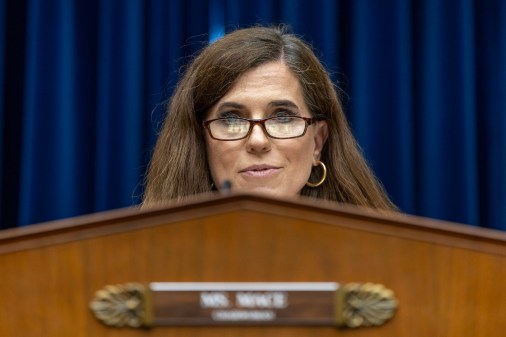Some agencies spending 90-percent of IT budget on legacy systems — report
Some agencies are spending 90 percent or more of their IT budgets on operations and maintenance, a report released last week found.
The IDC Government Insights report found 77.7 percent of proposed agency IT budgets for fiscal year 2017 are going to operations and maintenance, with the remaining sliver dedicated to systems development and enhancement.
That essentially means that agencies are spending more than three-quarters of their IT budgets — number that continues to grow — on “support for legacy systems,” Shawn McCarthy, research director for IDC Government Insights, wrote in a blog post.
Eight years ago, McCarthy’s blog post notes, the O&M percentage was closer to 66 percent.
At the Army Corps of Engineers, 96 percent of its $459.8 million IT budget is delegated to operations and maintenance, according to a IDC Government Insights report. At the Nuclear Regulatory Commission, that number is 93 percent of the IT budget. At Agriculture, it’s 90 percent.
Texas Rep. Will Hurd, a Republican who says his legislation that recently passed the House will hold federal IT officials accountable for upgrading their systems, told FedScoop in September, “When a CIO comes and says, ‘well we don’t have enough money’…You’re not spending it in the right places, you know, you’re not showing the right leadership, you don’t have the right processes in place to modernize.”
McCarthy told FedScoop he has been following this issue and doing this analysis for more than 10 years, and these are the largest numbers he has seen.
Historically McCarthy put the averages at roughly two-thirds to operations and maintenance, and one-third into new development.
“And that puts government maybe slightly higher than other industries. I’ve seen it to as much as 55 or 60 percent across other industries,” he said.
But he noted government agencies have unique IT challenges to contend with, particularly when it comes to justifying the initial expense of upgrading a system.
“Saying you’re going to invest $30 million that’s going to pay off after a congressman might be in office, it’s a little more difficult sometimes to squeeze the money out of a committee based on that,” McCarthy said.
McCarthy also noted modernization is a huge undertaking, with “a lot of risk involved” and a need for the right experts to shepherd the migration.
But the problem with that, as he notes in his blog post, is that “more money is being channeled into supporting older existing systems while less money goes toward the development and installation of new solutions.”
He added: “This legacy expense creep is an important issue, since supporting new development is very important not only to help agencies work to transition toward cheaper commodity IT, but also to help them take advantage of advances related to the Internet of Things, flexible mobile applications and location-aware IT solutions.”
When it comes to funding modernization, Hurd’s legislation could pave the way for a working capital fund for each agency and a centralized modernization fund agencies could draw from, but the bill as it stands doesn’t provide starting capital for agencies.
Hurd told FedScoop in September there are “a number of ways that money could potentially be reprogrammed, but that is something down the road that will be handled on the appropriations side.”
To start, Hurd noted if the bill was passed, it stipulates that if agencies do not use money in their working capital funds in three years, it will go to the centralized fund.
But he did also say that agencies can and should be modernizing now — without extra funds.
“I would love to have that conversation with the CIO that says they need more money in order to move to something that’s going to save them money,” Hurd said then. “It’s one of those tricks that longtime bureaucrats are using as an excuse to not do something.”
Hurd’s bill still has to pass the Senate, and there have been reports it could face opposition there. In response to that Hurd said, “I’ve heard these rumors as well, but I’m not hearing these rumors from the folks in the Senate that deal with these things.”
“You can’t operate in a bubble, right?,” Hurd added. “And I think that’s what happens too much up here is that if you really want to get something signed into law you have to begin with the end in mind. And part of that is…how do your companions in the Senate view this? And can we get something that can move? And so the [Modernizing Government Technology Act] had that input. And so we’ve been engaging with the leads over there and appropriate committee staff there.”
He also noted it is not possible to make everyone “happy.”
“So there’s one or two people who aren’t happy, and they want to create future problems down the road,” Hurd said. “But I do know that all the major pieces of this are supported by our friends on the Senate side.”
Hurd’s bill sailed through the House on Sept. 22 on a unanimous voice vote.
[Read more: IT Modernization bill passes house unanimously]
“I think everybody involved in this recognized the need to get this done now, right?” Hurd said. “The need that you have a CIO in the federal government, Tony Scott, that understood these issues, and that you have members on both sides of the political divide that understand the importance of this.”
The bill that passed the House is not the bill Congress began with. First Maryland Democratic House Minority Whip Steny Hoyer introduced the IT Modernization Act that would have created a revolving $3.1 billion modernization fund.
“Look the original modernization bill, there was no way that was going to ever get through appropriations…And also nobody could find the $3 billion to offset this,” Hurd said.
Hurd then introduced the MOVE IT Act. Eventually elements from the two bills were combined into what passed the House last month.
Hurd noted the group working on the hybrid bill got input from the private sector and appropriators to develop what eventually passed the House.
U.S. CIO Tony Scott recently said the lack of funding in the current bill “is a problem that we hope to correct as we go further down the process.”
“It’s not a criticism; it’s kind of the state of play,” he said at an ACT-IAC IT Modernization Forum last week. “Whatever ends up in there, if anything, remains to be seen.”
[Read more: U.S. CIO developing ‘State of IT Report’ to complement IT modernization legislation]






